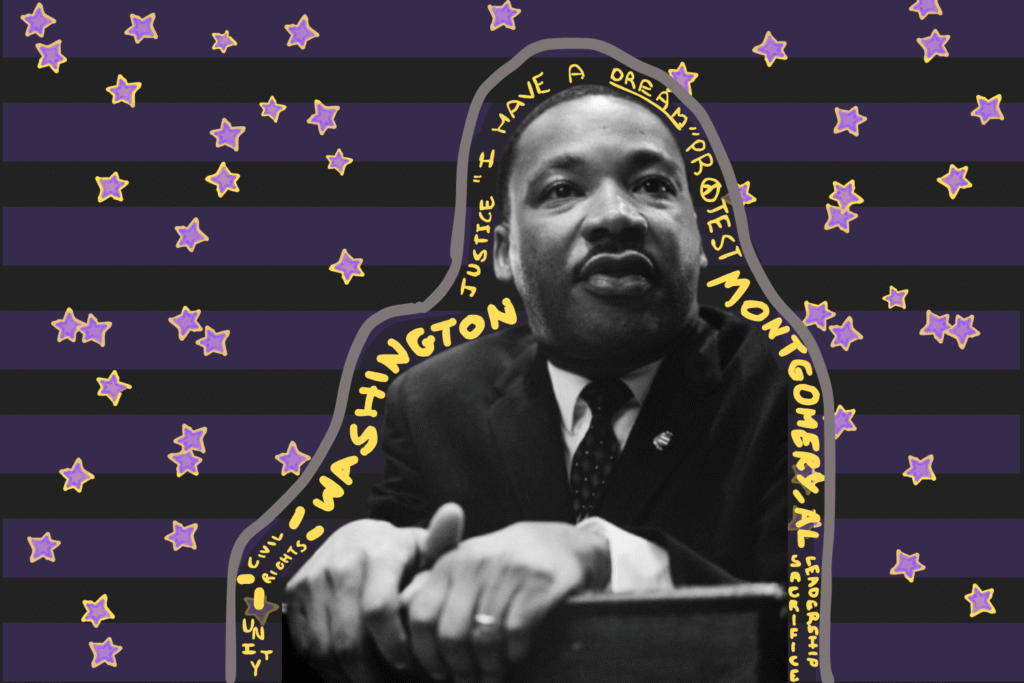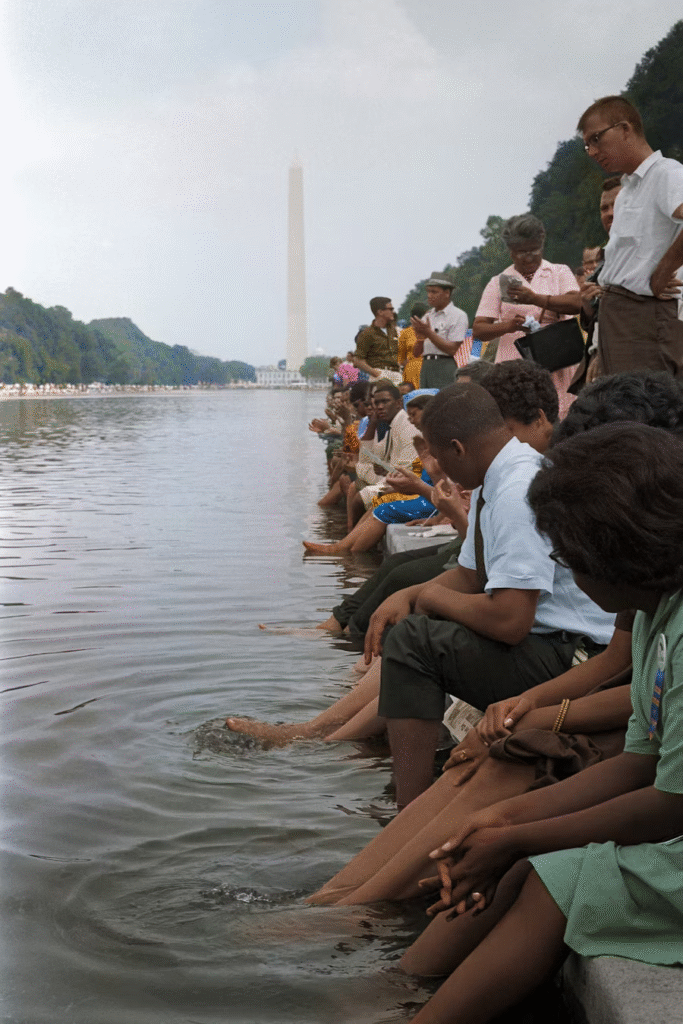
Table of Contents
Martin Luther King Jr. – The Man Behind the Dream
MLK Jr, born in Memphis, Tennessee on January 15 1929, was a civil rights leader in the United States and undoubtedly one of the most famous of these activists. He became known across the country through his role as head of the Southern Christian Leadership Conference (SCLC), through which he promoted peaceful protesting to achieve equal civil rights for black Americans.
His advocacy was vital to the success of the movement, namely in ending legal segregation established by the “separate but equal” precedent of the Supreme Court decision in Plessy v. Ferguson .
Montgomery, Alabama
On December 1st 1955, Rosa Parks refused to give up her seat on a bus in Montgomery, Alabama to a white passenger, resulting in her arrest for violation of Montgomery’s segregation laws. Her act of defiance – which is still infamous today – and her consequent arrest sparked massive outrage resulting in the city’s relatively small civil rights organisation deciding to protest by forming the Montgomery Improvement Association (MIA) and boycotting the public transport system.
The group chose the young and charismatic King as their leader. He was relatively new to town, having been the pastor of the Baptist Church there for slightly longer than a year, and so they thought he would not have many enemies and that if the boycott did not go as planned, he would be able to find a new job.
We have no alternative but to protest. For many years we have shown an amazing patience. We have sometimes given our white brothers the feeling that we liked the way we were being treated. But we come here tonight to be saved from that patience that makes us patient with anything less than freedom and justice.
From MLK Jr.’s first speech to the MIA
One immediately notices his persuasive and emotive rhetoric and his overall fresh perspective – things which sparked a new wave of optimism in the movement which, after years of struggle, occasionally seemed hopeless.
On December 20th 1956, Montgomery’s buses were desegregated.
“I Have A Dream” – Birmingham and The March on Washington
In April of 1963, the SCLC joined together with Birmingham, Alabama’s very own Alabama Christian Movement for Human Rights (ACMHR) in order to challenge the city’s segregation. The choice of city was also significant as it was one of the most segregated cities in the country, notorious for violence and KKK activity.
Their campaign began on the 3rd of April with meetings, marches and boycotts but no overarching violence – something which MLK Jr repeated consistently to black citizens. On the 10th, the city of Birmingham obtained an injunction against the protests. This was disobeyed by the leaders of the campaign. Eventually, King came to the conclusion that he had no choice but to risk jail as he believed one had a duty to break immoral laws.
The demonstration started on 2 May 1963. Children were placed at the forefront of the march resulting in the arrest of over 900 children. Police Chief Eugene ‘Bull’ Connor also used methods such as dogs against marchers but, by the third day, many members of law enforcement refused to attack those marching.
The campaign served as a model for peaceful and nonviolent protest. It also captured the influence of the media in such situations as the press was able to draw the world’s attention to the devastating racial climate in America, especially in the South. In the end, Birmingham obtained desegregation in Birmingham, ultimately marking a step towards the Civil Rights Act 1964.
On the 28th of August 1963, 250,000 people gathered and participated in the ‘March on Washington for Jobs and Freedom.’ It resulted in the civil rights “Big Six” – Roy Wilkins, A. Philip Randolph, James Farmer, John Lewis, Whitney Young and of course, MLK Jr. They gathered to protest peacefully down the Mall, with the powerful backdrop of the Lincoln Memorial serving as a reminder of their purpose.

Arguably, the event’s most memorable part was its end – King’s “I Have a Dream” speech. He explored topics that touched the hearts of those present and others to this day. He talked of how “all men are created equal” which went against the embedded state sanctioned segregation and systematic racism of the time. He effectively used parallelism – phrases and paragraphs of similar structure – to invoke sympathy and pathos.
His iconic “I have a dream”, repeated eight consecutive times, has even been compared to the beat of Beethoven’s iconic 5th Symphony. Most importantly, he gave hope to a nation, a people, torn apart by the faded and yet poignant shadow of the Old South and the Institution which ‘crumbled’ with it.
How Did He Impact the Law?

MLK Jr can undoubtedly be remembered as someone who made every effort to strengthen the relationship between the law and social justice. It is important to remember that he was not just fighting for the law but also against it – something highlighted in his ‘Letter from Birmingham Jail’ where he detailed how “A just law, is a man-made code that squares with the moral law, or the law of God. An unjust law is a code that is out of harmony with the moral law.”
By framing justice in this way, King exposed the moral failings of legal segregation and inspired others to see civil rights as a battle for both legal reform and ethical integrity. His relentless opposition to segregation, which continued even after Brown v. Board of Education, helped pave the way for a more equitable future for African Americans across the nation.
However, this is not to say that there is not still work to be done. Black Americans across the country still face prejudice, reminding us that his vision of true justice remains an ongoing struggle.
Check out ‘The King Center’ website to learn more about how MLK Jr’s legacy lives on today.
Got Ideas? Send us a suggestion.

